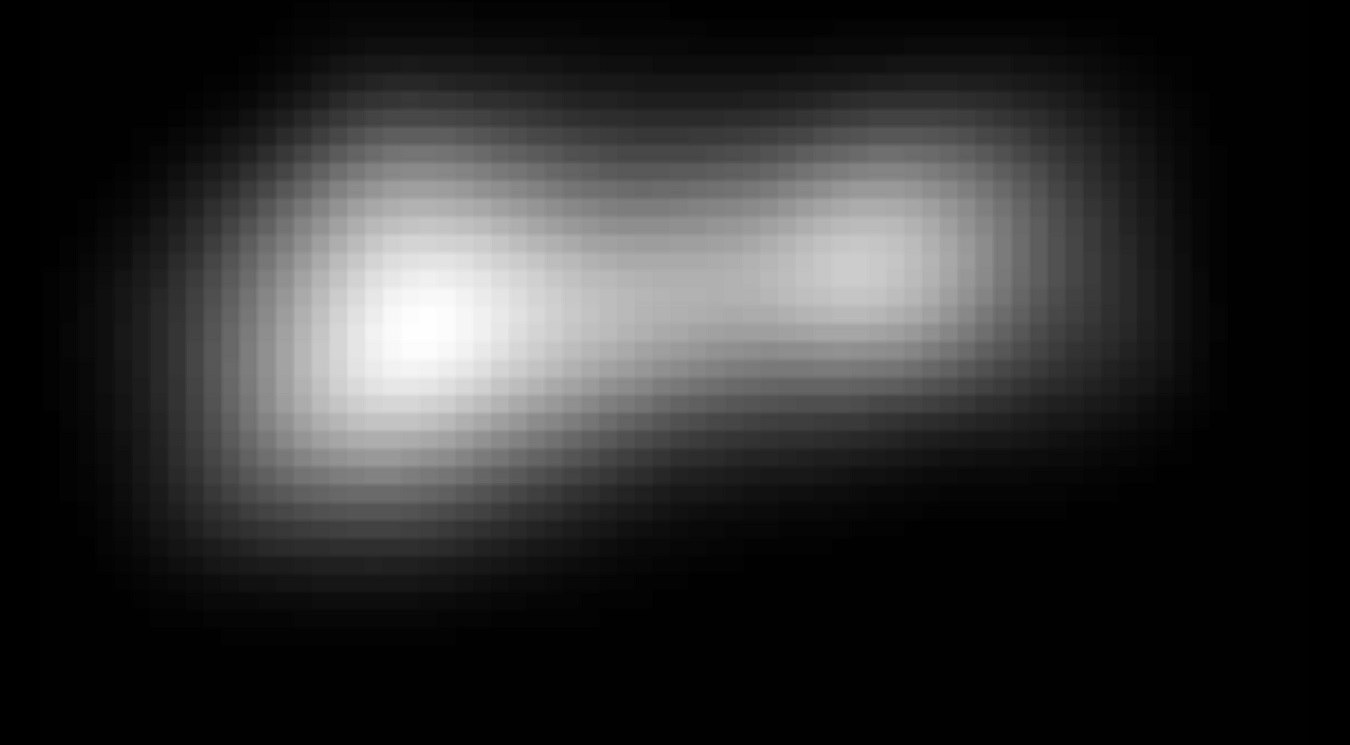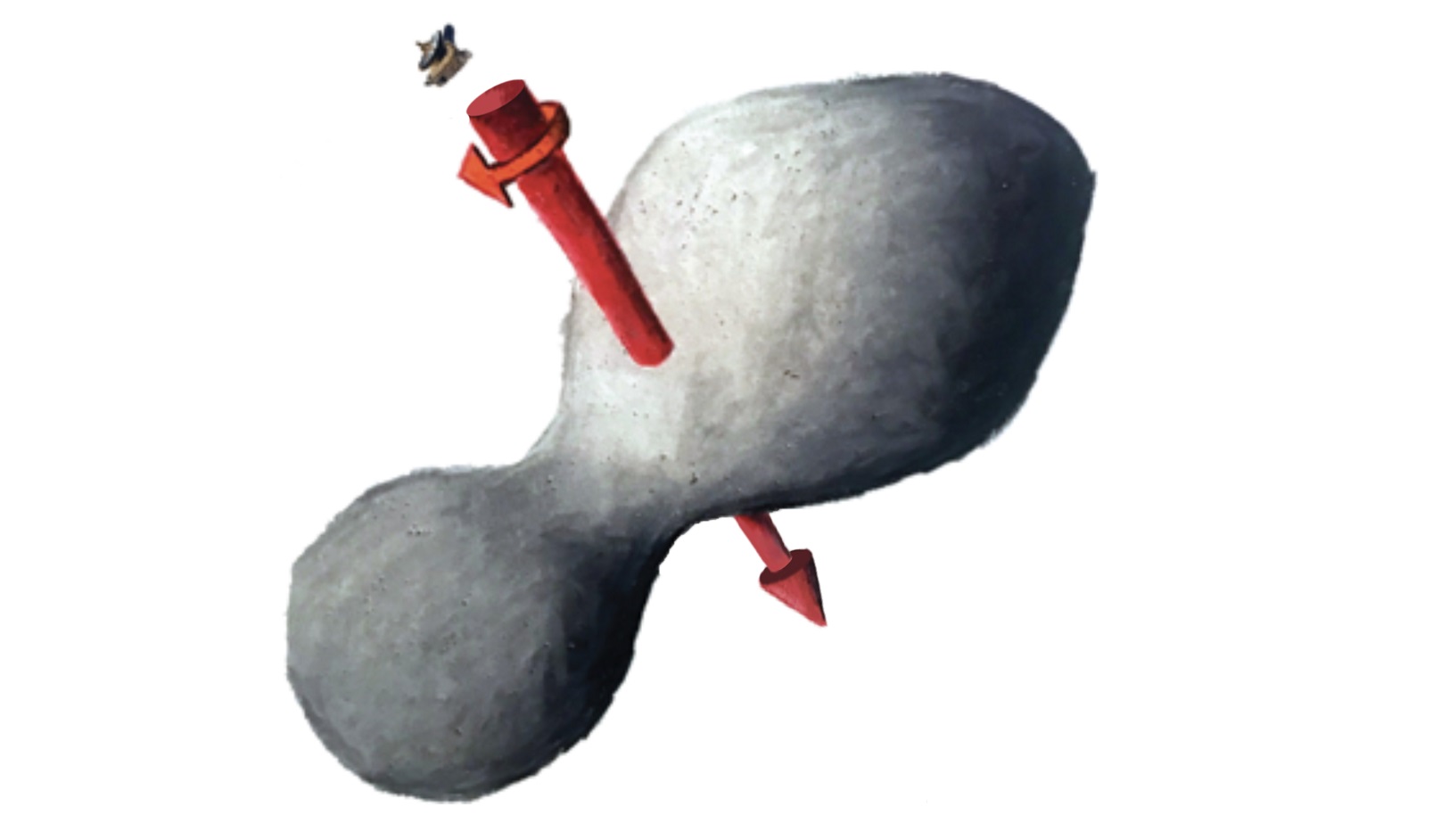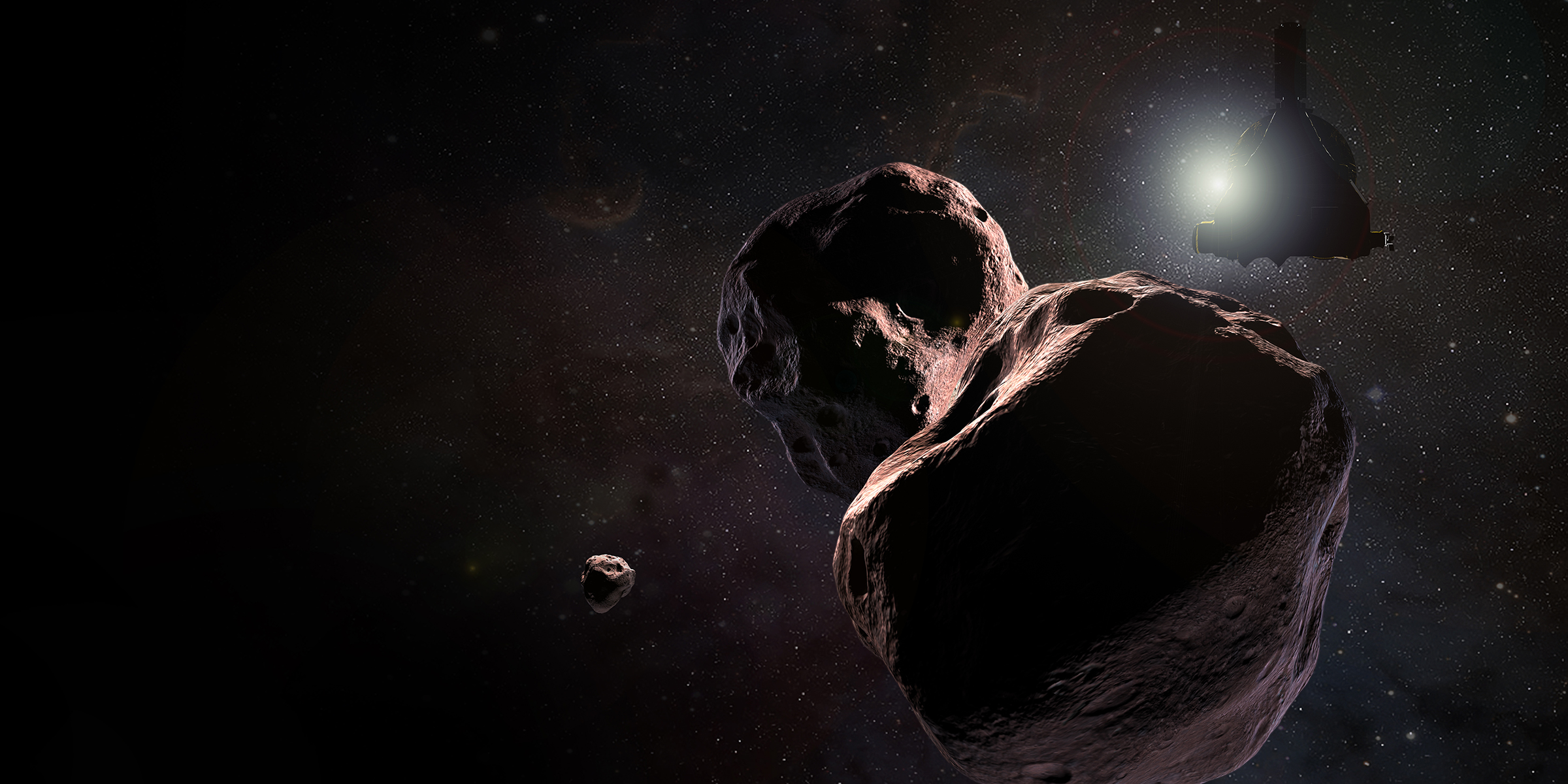NASA’s New Horizons probe has been exploring the farthest regions of our solar system and made a very special visit on New Year’s Day 2019. On the first day of the new year, the probe buzzed an object unofficially called Ultima Thule, also known as Kuiper Belt object 2014 MU69. Sitting 4.1 billion miles (6.6 billion kilometers) from Earth, Ultima Thule is the most distant object ever explored by a spacecraft, and scientists believe it can provide information on the formation of the early solar system.
The New Horizons probe was launched in January 2006 and has been making its way through the solar system since then. It got a gravity boost when it passed Jupiter in February 2007, then spent six months gathering data from Pluto and its moons in summer 2015. Then it headed out into the Kuiper Belt to examine the cold, icy objects in the belt beyond Neptune.
The probe passed Ultima Thule early in the morning on January 1, 2019. The Ultima Thule flyby happened live on the NASA TV YouTube channel. You can still watch the broadcast, which includes a briefing and panel discussion about the flyby and a stream of the signal acquisition from New Horizons.
The Ultima Thule flyby was much more technically demanding than the flyby of Pluto due to the extra distance from Earth. There were many more unknowns involved, including the exact position of the object and the potential existence of nearby moons or other environmental hazards. In addition, there were lower levels of light and longer communication times in directing the probe, all of which added to the challenge.

NASA scientists have already noticed something unexpected about Ultima Thule. They have known since 2017 that the object is not spherical — it is probably an elongated shape, or could even be two objects moving close together — but it does not give off the pulsing variation in brightness that would be expected for an object of that shape. The “light curve” is a period variation in brightness during each rotation of an object, and Ultima Thule’s light curve is unexpectedly small.
“We’ll get to the bottom of this puzzle soon,” Dr. Alan Stern, principal investigator of the New Horizons mission, said. “New Horizons will swoop over Ultima and take high-resolution images on December 31 and January 1, and the first of those images will be available on Earth just a day later. When we see those high-resolution images, we’ll know the answer to Ultima’s vexing, first puzzle. Stay tuned!”

Now NASA has released the first color image of Ultima Thule, showing it to be a snowman shape — and also to have a reddish surface. On the far left is an image captured by the Multispectral Visible Imaging Camera (MVIC) which has been color enhanced to show to red shade of the surface, using a combination of near infrared, red, and blue channels. In the middle is a crisper image taken by the Long-Range Reconnaissance Imager (LORRI) which has better spatial resolution than the MVIC, allowing the capture of a more detailed but black and white image. On the right is an overlay of the two images, showing the approximate details and color of Ultima Thule.
The image confirms that Ultima Thule is one non-spherical object, with the larger sphere called Ultima being 12 miles across and the smaller sphere called Thule being 9 miles across. So far there is no evidence of rings around the object or satellites larger than one mile wide orbiting it. The color is similar to other objects found in the Kuiper Belt like Pluto, and it is noteworthy that both “lobes” of the object are the same color. This indicates that the two lobes were once separate objects that joined together, not violently but at a gradual speed, somewhat like a spacecraft docking instead of a collision. This joining happened extremely early in the lifespan of the Solar System, with scientists estimating that the joining occurred in the first one percent of time between the Solar System forming and now.
“New Horizons is like a time machine, taking us back to the birth of the solar system. We are seeing a physical representation of the beginning of planetary formation, frozen in time,” Jeff Moore, New Horizons Geology and Geophysics team lead, said in a statement. “Studying Ultima Thule is helping us understand how planets form — both those in our own solar system and those orbiting other stars in our galaxy.”
Previous images of Ultima Thule had suggested that it was bowling ball shaped, but with these new images several nerdy space fans have noted that the object bears a more striking resemblance to BB-8, the jolly round orange droid from the Star Wars movies. New Horizons principal investigator Alan Stern disagrees, however: “It’s a snowman, if it’s anything at all,” he told a press conference.
There will be lots more data to come from the flyby which will gradually be sent back to Earth, but there will be a delay of a few weeks while the craft passes behind the Sun. You can see where the craft is currently located on the NASA website.
Updated December 30, 2018 with information about how to watch the flyby.
Updated January 1, 2019 with information about the successful flyby.
Updated January 5, 2019 with color images and further information about the object.
Editors' Recommendations
- NASA probe becomes first in history to ‘touch’ the sun
- Most distant object ever explored is renamed following Nazi controversy






